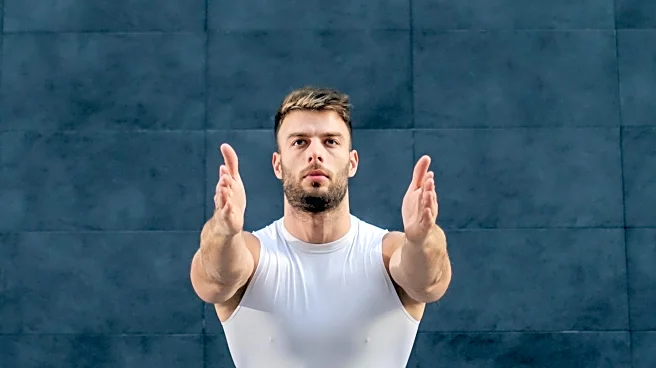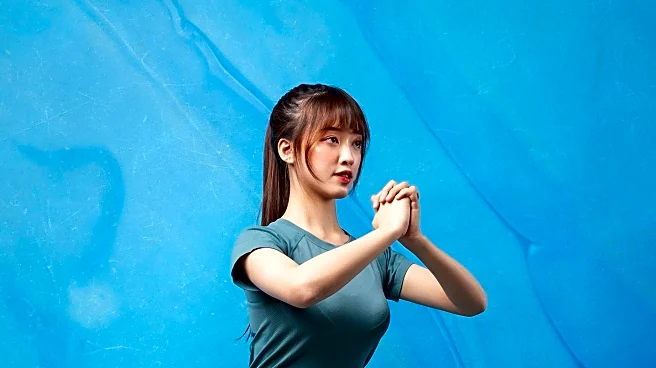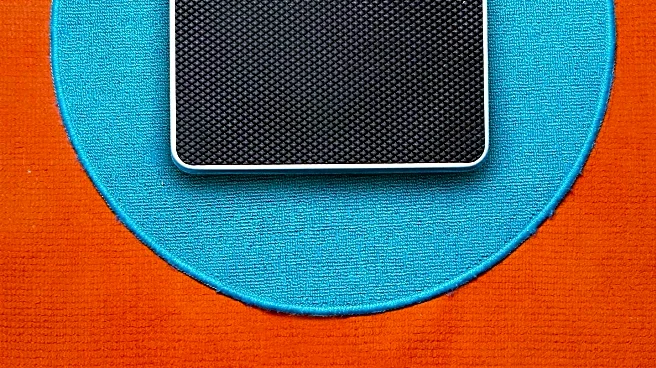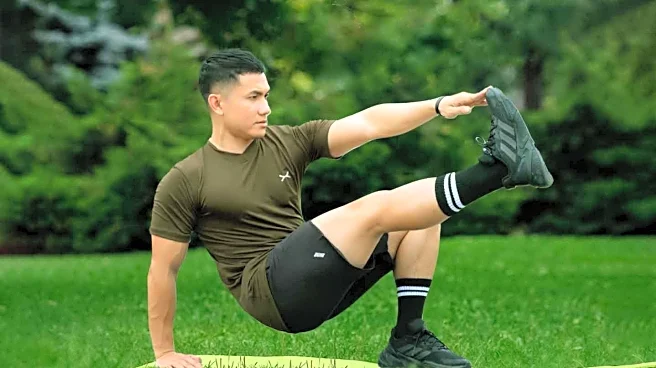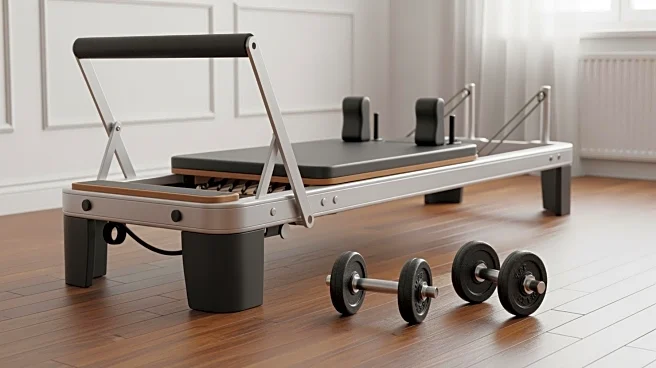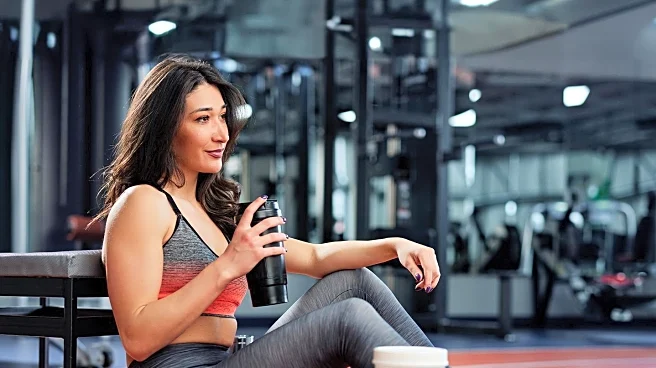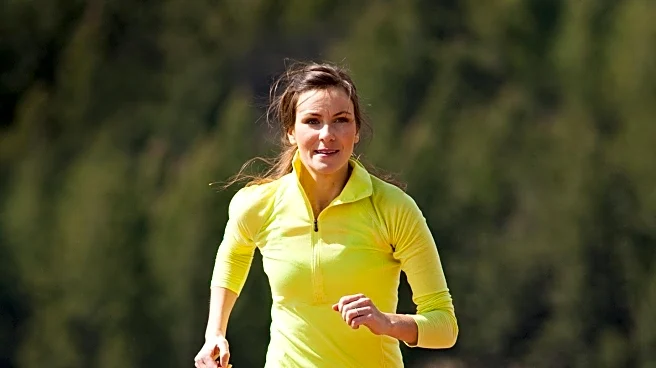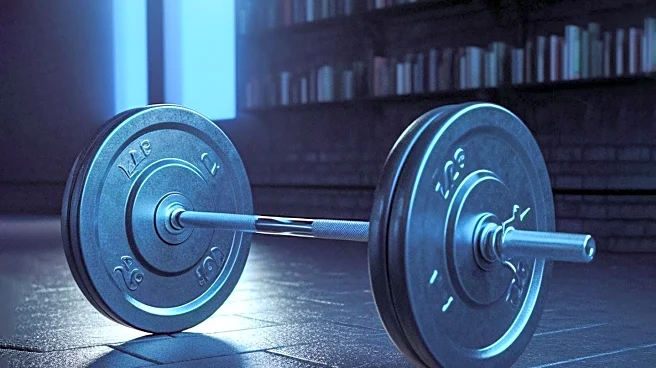What's Happening?
The bear hug squat is gaining attention for its ability to improve strength and posture, potentially contributing to increased longevity. According to Women's Health, this exercise targets both lower and upper body muscles, including quadriceps, glutes,
hamstrings, chest, and core muscles. Personal trainer Eryn Barber emphasizes the importance of grip strength, which is enhanced by holding a sandbag or medicine ball during the squat. Studies suggest grip strength is a key indicator of long-term health, surpassing even blood pressure as a predictor of early death. The bear hug squat also aids in maintaining an upright posture, improving squat technique and core engagement.
Why It's Important?
The bear hug squat's emphasis on grip strength and posture aligns with broader health trends focusing on functional fitness and longevity. As grip strength is linked to quality of life in older adults, incorporating exercises that enhance this metric can be crucial for long-term health. The exercise's ability to target multiple muscle groups makes it a valuable addition to strength training routines, offering benefits for muscle definition and overall fitness. This focus on comprehensive strength training supports the growing interest in exercises that promote both physical health and longevity.
What's Next?
Individuals interested in incorporating bear hug squats into their fitness routines should consider starting with lighter weights to ensure proper form and prevent injury. Progressions can include increasing the load or adding pauses to enhance muscle tension. Fitness enthusiasts may explore integrating bear hug squats into full-body workouts to optimize strength gains. As awareness of the exercise grows, it may become a staple in strength training programs, particularly for those seeking to improve grip strength and posture.
Beyond the Headlines
The bear hug squat's focus on grip strength highlights the importance of functional fitness in everyday life. As more people recognize the value of exercises that mimic daily movements, such as standing and sitting, the bear hug squat may contribute to a shift towards fitness routines that prioritize practical strength and longevity. This trend reflects a broader cultural movement towards sustainable health practices that support long-term well-being.
